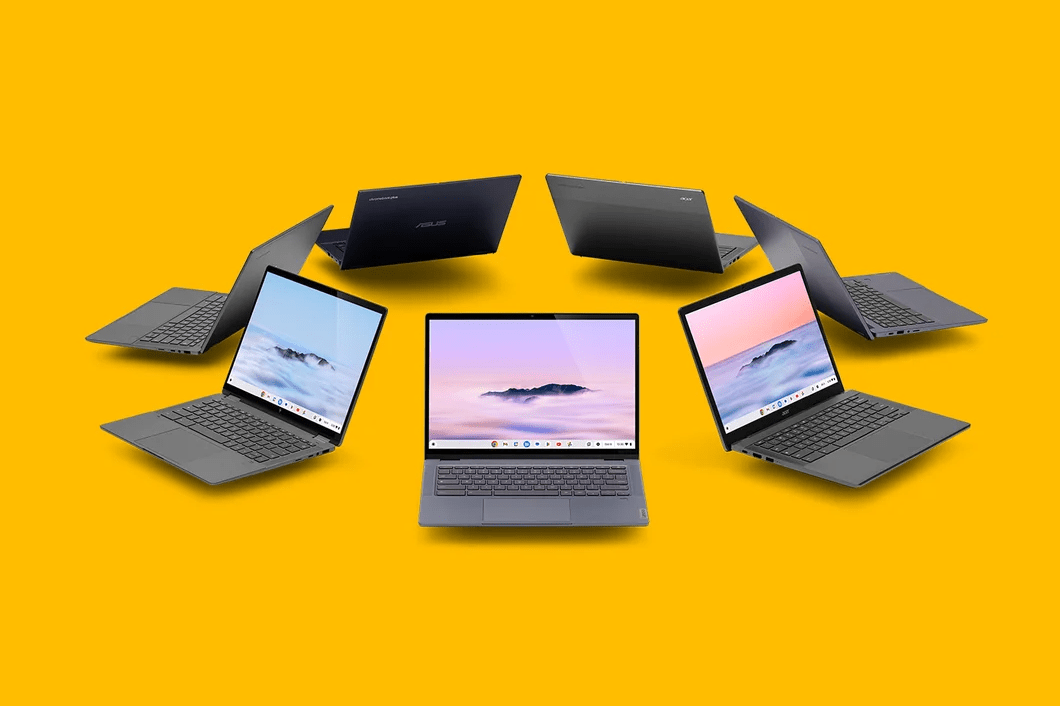
Laptops for the holidays: ‘Chromebook Plus’ machines fill a gift-giving niche
I am crazy about Chromebooks, those weirdly web-centric laptops invented by Google in the late aughts and later popularized in K-12 classrooms — if you don’t have a child who uses one in school, you know someone who does.
But does a Chromebook make a good holiday gift as an alternative to, say, a Windows PC or an Apple Mac? Sure, at least for some people — those with Gmail accounts are the best candidates — but you want to pick a decent machine. The chintzy ones used in public education won’t cut it.
Enter “Chromebook Plus.”
Google has joined with its hardware partners Asus, Acer, HP and Lenovo to make Chromebook shopping a cinch. They have applied the new “Plus” label to eight machines that have decent specs but aren’t budget busters. The idea here is for consumers to grab the laptop with “Plus” on the box because, well, it has to be good, right?
Yeah, it mostly is.
I have tried two Chromebook Plus models and I like them enough to recommend; more on those in a bit.
The Plus specs are stringent enough to all but guarantee quality across the board (keeping in mind that these are budget laptops, not fancy Macs costing two or three times as much). Those eight models aren’t the only Chromebooks with Plus-caliber features, but explicitly classifying a handful as such makes things easier for tech shoppers.
A quick Chromebook primer
But what the heck is a Chromebook, anyway?
You have, no doubt, seen Google’s Chrome browser running on a PC or Mac. A souped-up Chrome version called ChromeOS is what makes a Chromebook go. ChromeOS looks and acts a lot like Windows and the Mac’s macOS, but you’re basically working in a browser most of the time.
That’s a nonstarter for PC and Mac users unaccustomed to living in a Web window, where they would be cut off from treasured desktop tools. On a Mac, for instance, I am addicted to the Mimestream email app, which has no peer on any other kind of computer.
But since Mimestream taps Gmail on the back end, switching to a Chromebook is not too painful because I can use the web-based Gmail app. Heck, as a Pioneer Press writer and web editor, I am able to do my entire job on a Chromebook — All of my work tools are web-based. That includes Google Docs and WordPress, which I used to write and then publish this piece.
Chromebooks are famously easy to maintain. They update themselves quickly and simply, much as the Chrome browser does. Tight security is built in, too. This is why Chromebooks are excellent for people who are not computer-savvy because there isn’t a whole lot to worry about.
Performance is another plus. Chromebooks are less hardware-hungry than PCs, so even a laptop with modest specs will run snappily. That is one reason Chromebooks are so affordable.
The ‘Plus’ models I tried out
With Chromebook Plus models, you are guaranteed at least 8 gigabytes of RAM and 128 GB of storage, a webcam that is 1080p or better, a display that is 1920 by 1080 pixels or better, and a reasonably speedy Intel or AMD processor. This is pretty basic in the PC and Mac realms, but a reasonable baseline in a Chromebook world replete with garbage hardware.
The two Chromebook Plus models I tested – Acer’s $399.99 Chromebook Plus 515 and Lenovo’s $499 IdeaPad Flex 5i – make a convincing case for this portable tech. These chunky and plastic-y laptops aren’t much to look at compared to, say, Apple’s MacBook Air, but they are snappy and seem reasonably durable.
Acer’s model is a conventional clamshell; you lift the lid and get to work, simple as that. This is aided by a jumbo trackpad and a full-size keyboard that feels great but, to my dismay, is not illuminated.
The machine’s 15.6-inch display has a modest 1920-by-1080-pixel resolution but a handy 16-by-9 aspect ratio good for watching video or comfortably putting two work windows side by side.
The 515 has two USB-C ports, a USB-A port, an audio jack and a full-size HDMI port. The latter allowed me to hook the laptop to an external display, with a second monitor jacked into one of the USB-C ports, for a killer three-screen workstation.
Lenovo’s model is a “convertible” computer, meaning the illuminated keyboard folds back and out of the way so users can avail themselves of the touch screen much as they would an iPad. The screen has stylus support, but Lenovo doesn’t include one.
The 14-inch screen, 1920-by-1200-pixel display has a 16-by-10 aspect ratio that is a bit cramped when positioning windows side by side, but is taller than that of the 515 for those scrolling through lots of documents.
Lenovo left out an HDMI port, choosing instead to go with an SD-card slot — not the best call.
Which Chromebook Plus model would I get? Both appeal to me, but I’d probably go with the Acer because I’d be the most productive — that unfathomably unlit keyboard aside. The company seals the deal with a padded, zippered carrying case.
But who are the things for?
Chromebooks work best for someone who already lives in the Google ecosystem or is willing to move there; I qualify since I rely on Google services even though I favor Apple’s computer gear. A Chromebook requires users to have a Google account, which is fine with me since I have a work one and a home one.
Potential Chromebook recipients on your gift list would typically fall into two categories:
Those who are aware of Chromebooks and would be glad to get one.
Those who have no idea what they are and stand to benefit from one.
People in the first category include tech geeks like me who can’t have too many gadgets, along with the practical-minded who can put any spare computer to good use around the house. Kids will appreciate the gift of a Chromebook that isn’t junk, too.
People in the second category include computer-clueless who would have difficulty keeping up with Windows or Mac maintenance and who might have been bitten by malware of the sort that is uncommon in ChromeOS. Chromebooks are safer and easier.
Related Articles
Roseau pair stole electricity to run bitcoin farm, suit alleges
A six-planet solar system in perfect synchrony has been found in the Milky Way
Too Good To Go food waste app offers restaurant deals
New technology installed beneath Detroit street can charge electric vehicles as they drive
If your abode is your office, you may be overdue for some tech upgrades


